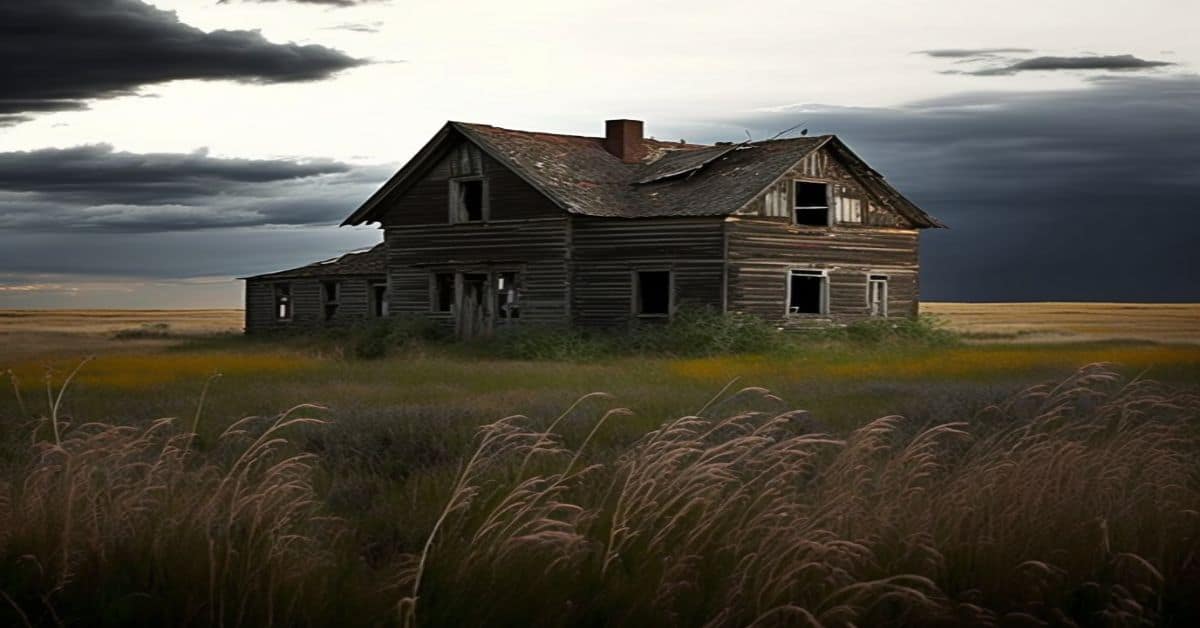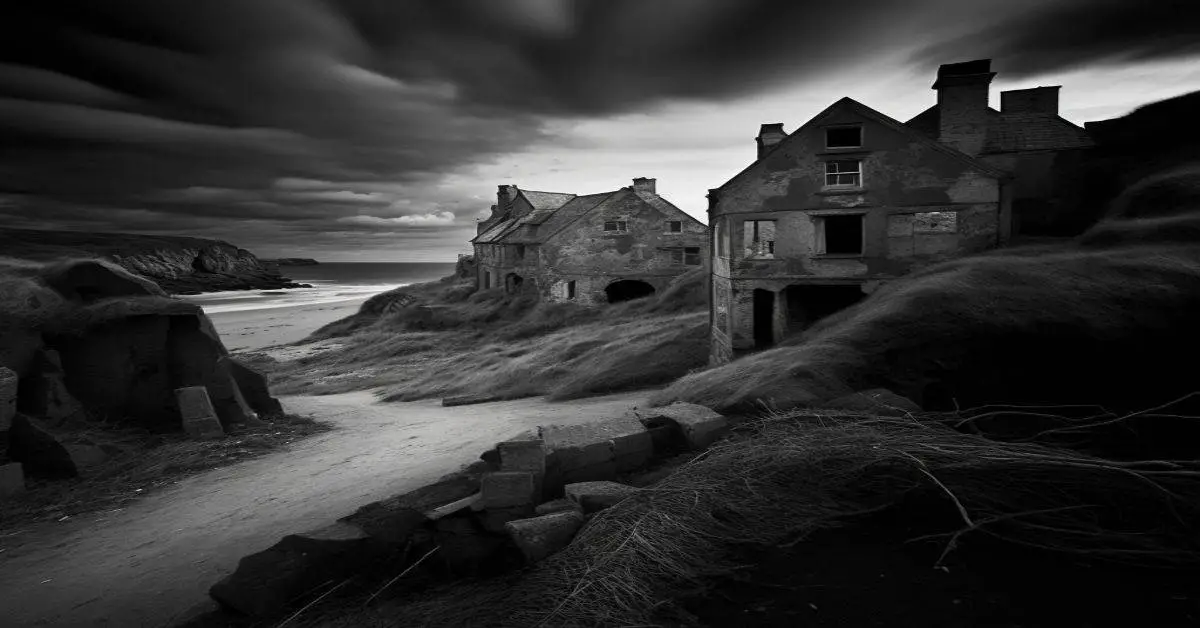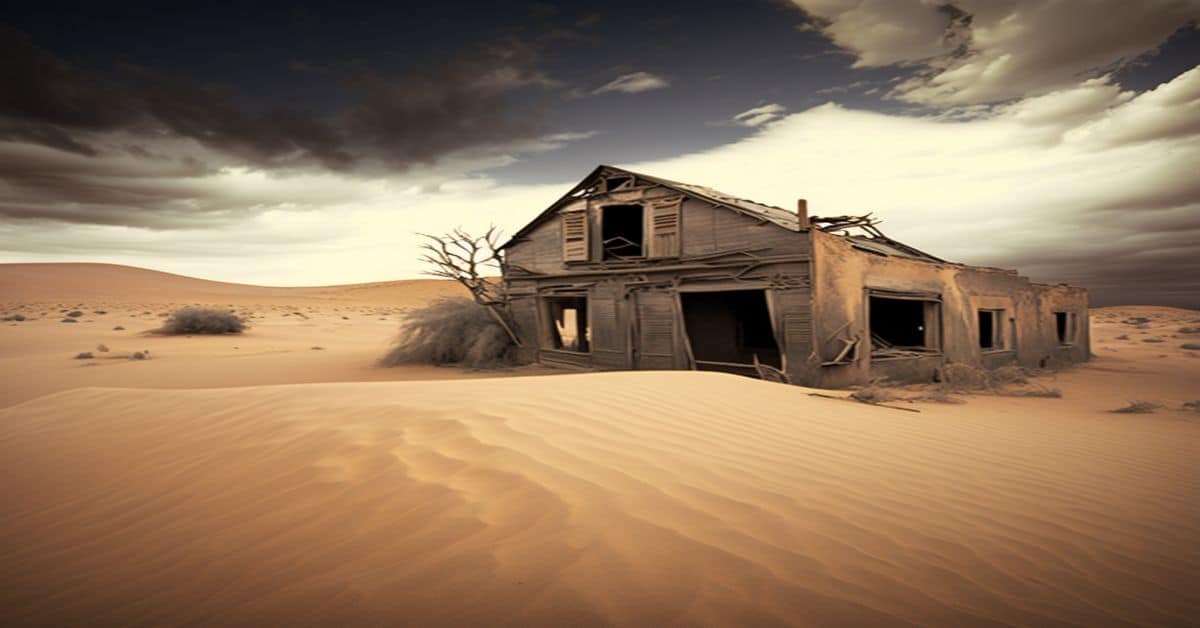Located approximately 18 miles west of Tulsa on State Highway 51A, Keystone is a ghost town in Oklahoma that offers a glimpse into the rough and tumble days of the old west.
The town started as a tent city in the early years of Indian Territory and was known for its rowdy atmosphere and numerous bawdy houses.
Despite its reputation, Keystone was a bustling town that served cowboys, Creek Indians, oilfield roughnecks, and fancy river gamblers.
Today, Keystone is a testament to its colorful past, with broken concrete from old Highway 51, foundation blocks, and rock wall remnants scattered throughout the area.
Accessible via 2WD roads, the town offers an opportunity for visitors to step back in time and explore the remnants of a once-thriving community.
From its rich history to the remains of its buildings, Keystone provides a unique perspective on the wild west and the people who lived there.
This article will take a closer look at the history and remains of Keystone and the nearby Keystone Dam.
Key Takeaways
- Keystone was a rowdy ghost town in Oklahoma, known for its bawdy houses and serving cowboys, Creek Indians, oilfield roughnecks, and fancy river gamblers.
- Visitors can explore Keystone’s natural surroundings and visit the scenic overlook site above Keystone Dam, which generates hydroelectric power serving the north-central region of Oklahoma.
- The Battle of Round Mountain, the first Civil War action, was held on Round Mountain, three miles south of Keystone.
- The USGS quad maps from 1958 and 1967 show the massive change brought to the region by Keystone Dam’s construction, which makes it a must-see destination for visitors.
Location and Access
Located approximately 18 miles west of Tulsa on State Highway 51A, Keystone is accessible via 2WD roads and can be found on grid 3.
Visitors can explore Keystone’s natural surroundings, which boast hot summers and cold winters, making spring and fall the best time to visit.
The town is located just below the south end of the earthen part of the Keystone Dam, and the Army Corps of Engineers maintain a scenic overlook site above the location.
Aside from exploring the town’s rich history, visitors can also take day trips to nearby attractions.
The Battle of Round Mountain, the first Civil War action, was held on Round Mountain, which is only three miles south of Keystone.
Additionally, visitors can tour the hydroelectric facilities below and inside the north end of the dam on weekdays.
For those seeking a unique experience, Keystone offers a glimpse into Oklahoma’s past and surrounding natural beauty.
History and Remains
The historical significance of Keystone lies in its role as a center for cowboy culture, Creek Indians, oilfield roughnecks, and fancy river gamblers in the early years of Indian Territory.
The town started as a tent city and later became a rough and tumble old west town, rumored to have had more bawdy houses than family dwellings.
The gambling scene was particularly notorious, with fancy river gamblers coming from all over to try their luck in Keystone.
The remains of the town include broken concrete from old Highway 51, foundation blocks, and rock wall remnants.
These remnants are a testament to the town’s wild west past and the colorful characters who once called Keystone home.
Visitors can imagine what life was like in the town’s prime, as they explore the remaining structures and imagine the cowboys, Creek Indians, oilfield roughnecks, and fancy river gamblers who once walked the streets of Keystone.
Keystone Dam
Situated just below the south end of the earthen part of the dam, Keystone Dam offers visitors a glimpse into the hydroelectric facilities and a scenic overlook site maintained by the Army Corps of Engineers.
The dam is responsible for generating hydroelectric power that serves the north-central region of Oklahoma. The facilities below and inside the north end of the dam are open for tours on weekdays, allowing visitors to see the inner workings of the hydroelectric plant.
The scenic overlook site above Keystone Dam provides a breathtaking view of Keystone Lake and the surrounding area. Visitors can take in the scenery while learning about the history and construction of the dam.
The USGS quad maps from 1958 and 1967 show the area before and after the dam’s construction, emphasizing the massive change it brought to the region.
The combination of hydroelectric power and scenic views make Keystone Dam a must-see destination for visitors to the area.
Frequently Asked Questions
What was the main industry in Keystone during its peak?
During its peak, Keystone’s main industries were agriculture and oil. The town had a population of 2,000-3,500 and served cowboys, Creek Indians, oilfield roughnecks, and fancy river gamblers. It is rumored to have had more bawdy houses than family dwellings.
What was the population of Keystone at its highest point?
The population growth of Keystone during its peak is not specified in the given text. However, the text mentions the town’s demographic changes and its history as a rough and tumble old west town that served cowboys, Creek Indians, oilfield roughnecks, and fancy river gamblers.
Are there any famous figures or events associated with Keystone’s history?
Keystone, Oklahoma had infamous residents such as outlaws, prostitutes, and bootleggers. Notable events include the Battle of Round Mountain and the presence of oil fields. The town’s cultural significance and legacy continue to be explored by historians and visitors today.
What is the current state of preservation for the remaining structures in Old Keystone?
Preservation efforts have been made to maintain the historical significance of remaining structures in old Keystone, including broken concrete from old Highway 51, foundation blocks, and rock wall remnants. The town was a rough and tumble old west town, serving cowboys, Creek Indians, oilfield roughnecks, and fancy river gamblers.
Are there any ghost stories or legends associated with Keystone’s past?
While Keystone’s history is rife with bawdy houses and Wild West tales, no documented ghost stories or legends are associated with the town. There have been no reports of haunted happenings or supernatural sightings.


